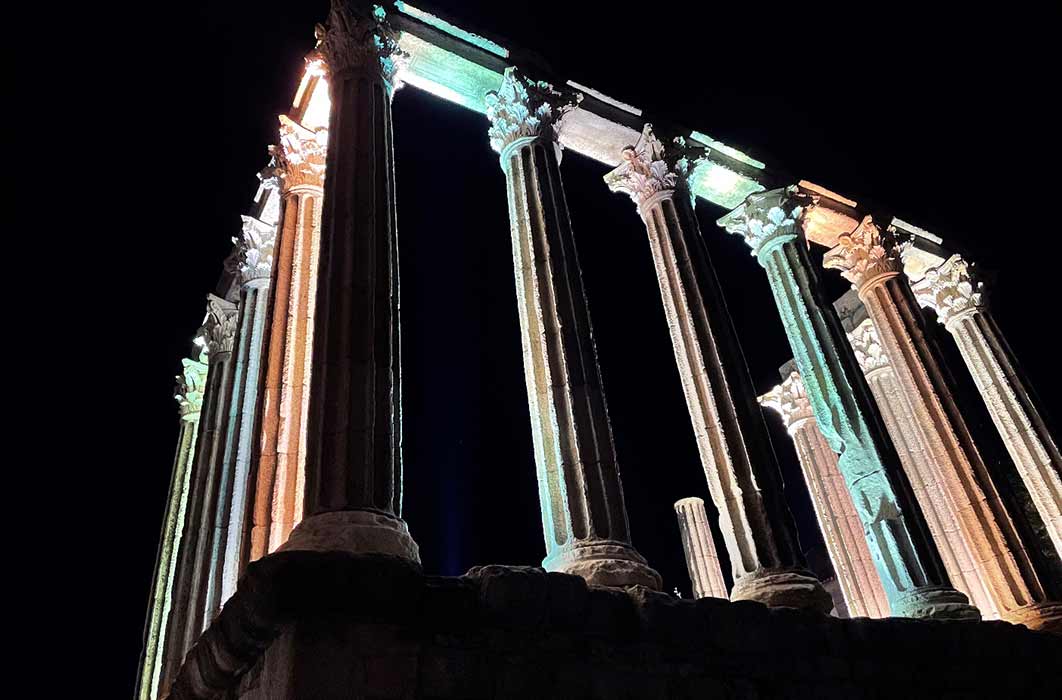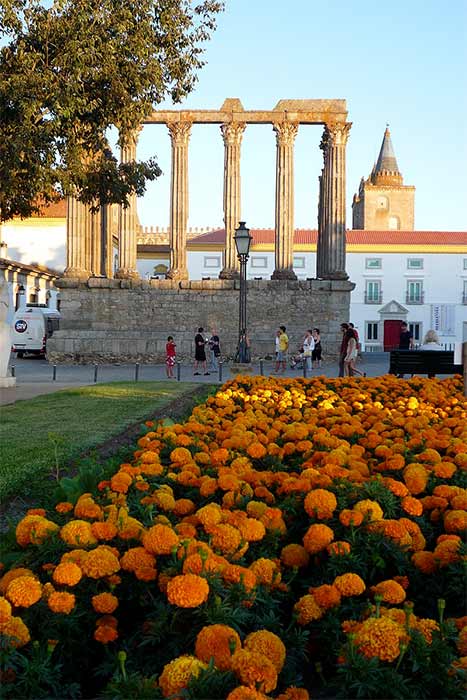
The Temple Of Diana And The Witch Of Évora
In the World Heritage Site of Évora, the capital of Portugal's south-central Alentejo region, one of the best-preserved Roman temples in the Iberian Peninsula dominates the centre of a large plaza at the high point of the hilly city. Surrounded by imposing buildings constructed more than a millennium later, the so-called Temple of Diana resembles an evocative movie set or a virtual-reality time warp, but things are not always as they appear to be.

The Roman Temple of Diana in the square ( Alvesgaspar/ CC BY-SA 3.0)
The ‘Temple of Diana’ Or Imperial Cult
A street winds around two sides of the colonnaded temple, which is surrounded on three sides by looming 15th and 16th century buildings, including the Palace of the Inquisitor, the Court of the Inquisition, the Church of St John the Evangelist, and the Convent of Loios. These massive, gleaming white buildings, with their rows of large, granite-framed rectangular windows, seem to be forming a protective bulwark against an ancient pagan faith whose energy still radiates from the ruined temple. The juxtapositions of architecture style and religious traditions are jarring.
The pleasant, shaded Garden of Diana, complete with wooden benches and a thriving refreshment kiosk, spreads out on the other side of the street and looks out over the city below and the distant hills. The garden is a good location from which to admire the moon rising over the temple, illuminated at night with garish, multi-colour lighting.

The manicured gardens of the historical square, with the Temple, the museum (formerly the Archbishop's palace) and the northern tower of the cathedral in the background (Luiscutileiro/ CC BY-SA 3.0)
Oriented toward the south, as indicated by the ruined monumental double staircase, the temple is raised on a 3.5-meter-high (12 feet) granite podium or platform, which measures 25 meters (82 feet) long by 15 meters (49 feet) wide. Six fluted Corinthian columns, topped with white marble capitals with decorative carvings (including sunflowers, roses, marigolds) form the north side; originally 10 columns were placed on the east and west sides; today, four partly ruined columns remain on the east and four on the west. Recent excavations indicate that there was a reflecting pool constructed at the base.
The official information plaque beside the cordoned-off staircase explains that this is not a temple dedicated to Diana, Roman goddess of the moon, the hunt, and chastity. Rather, it is a temple built in the first and third centuries AD and dedicated to the imperial cult, probably in honour of the Emperor Augustus. Its Dianic misnomer is the result of a 17th-century misattribution perpetrated by a Portuguese priest, Father Manuel Fialho. Apparently, he thought this temple was similar to the Temple of Diana in neighbouring Merida, Spain. So, he decided that the temple in Évora must also have been dedicated to Diana. It turns out, however, that Merida’s temple-attribution was also mistaken, and that the Spanish temple was a temple dedicated to the imperial cult, not to the chaste moon goddess. One might ask why this misidentification gained traction.





